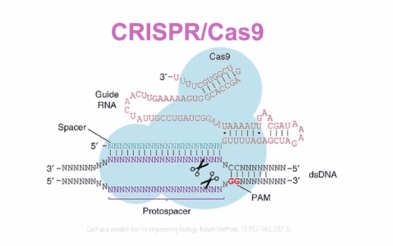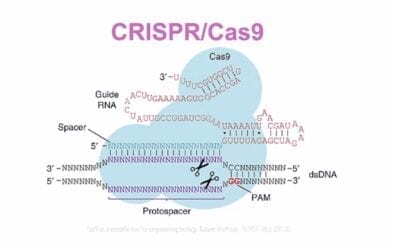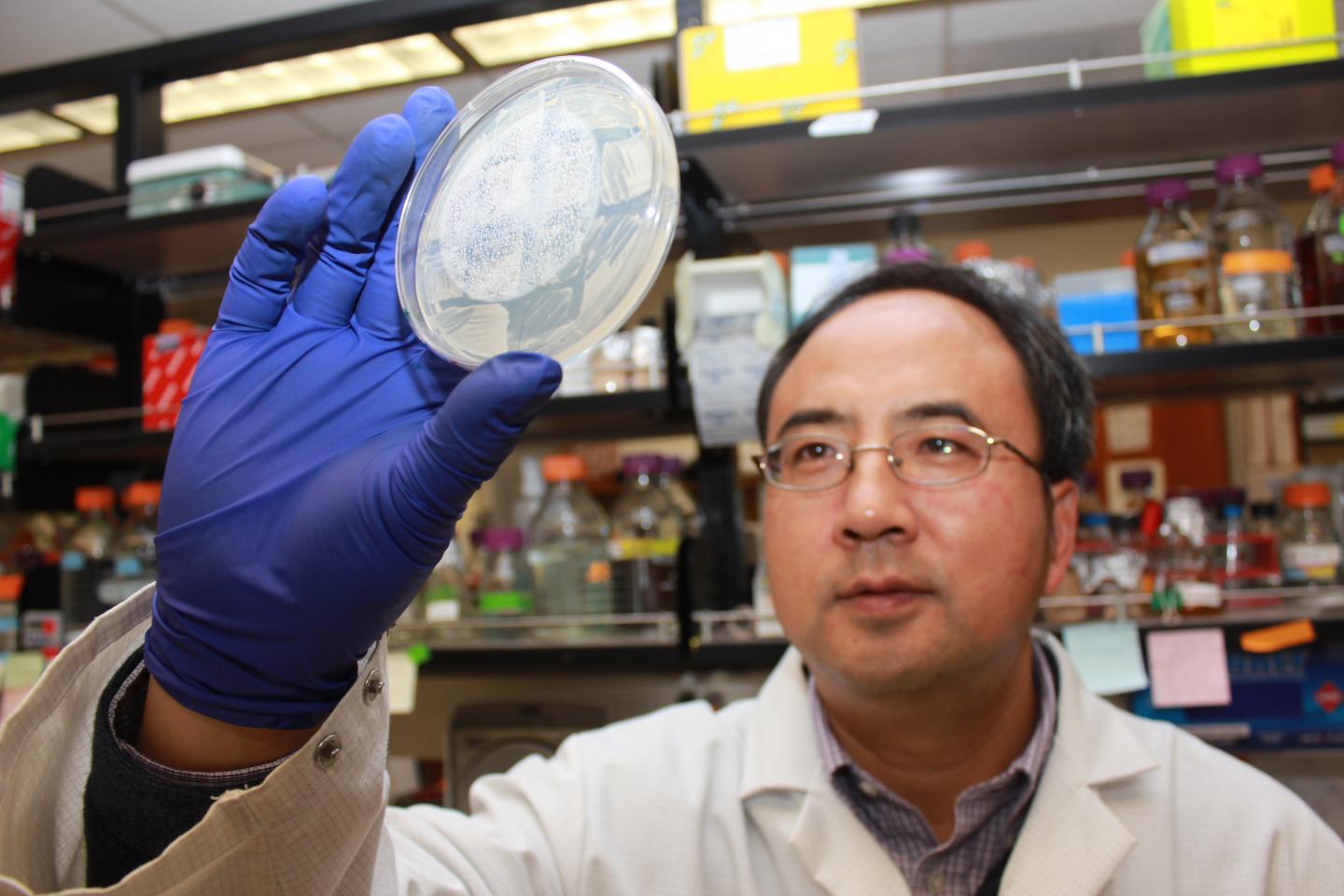
Entomologists review pros, cons and regulatory issues surrounding new technology that could help halt the spread of diseases such as Zika virus, dengue fever and malaria
Engineered gene drives, which have the potential to spread desirable genes throughout wild populations or to suppress harmful species, have received a lot of recent attention because of their potential to control organisms, such as mosquitoes that carry diseases such as Zika virus, malaria and dengue fever.
At the same time, the recently discovered CRISPR gene editing technology has the potential to create, streamline and improve the development of gene drives.
In a highly innovative and technical review, an entomologist at the University of California, Riverside has examined the different gene drives systems, analyzed the pros and cons of each and applications associated with them, and also surveyed the safety and regulatory issues associated with them.
“Despite all the potential benefits of gene drives, they remain understudied,” said Omar Akbari, an assistant professor of entomology at UC Riverside. “With that in mind, and with advances occurring so quickly, we wanted to step back and take a broad look at what is happening.”
Akbari, who is also a member of UC Riverside’s Center for Disease Vector Research andInstitute for Integrative Genome Biology, is the corresponding author of the piece, “Cheating evolution: engineering gene drives to manipulate the fate of wild populations,” that was just published online in the journal Nature Reviews Genetics. The piece was co-authored by Jackson Champer and Anna Buchman, both post-doctoral students working with Akbari.
The idea of editing the genes of organisms to address biological problems related to public and environmental health has been around for decades. In fact, the authors cite a paper from 1940 and others from the late 1960s that discuss this.
Despite the wide-ranging applicability and importance of gene drives, there has been only modest development in their progress in past decades. Gene drives capable of functioning in wild populations have been created in only a few organisms, including yeast, the fruitfly and two species of mosquitoes.
This is, in part, due to the difficulty of engineering the genomes of organisms. However, recent advancements have provided tools capable of engineering the genomes of diverse species. The most promising of these tools is CRISPR.
Combining gene drives and a tool such as CRISPR may enable the development of novel strategies to reduce or eliminate insect-borne diseases, remove invasive foreign species, and even reverse the development of resistance to insecticides and herbicides, in an economically viable and environmentally friendly manner.
In the paper, the authors focus on several types of gene drives, including homing-based drives, sex-linked meiotic drives, medea and underdominance gene drives. They describe the gene drives based on different attributes, including rate of spread, species specificity, fitness cost, susceptibility to resistance,removability and reversibility.
They also discuss whether the gene drives are classified as ‘modification drive’ types, which are designed to spread through a population carrying desirable traits, or as ‘suppression drive’ types, which have the effect of reducing the population of a target species.
Finally, the authors address safety and regulation. They mention dangers associated with gene drives, including the potential to cause extinctions, to spread outside a geographical area or traverse into another species and the potential misuse to cause economic damage or even bioterrorism.
Learn more: Engineered Gene Drives and the Future
The Latest on: Engineered gene drives
[google_news title=”” keyword=”engineered gene drives” num_posts=”10″ blurb_length=”0″ show_thumb=”left”]
via Google News
The Latest on: Engineered gene drives
- Scientists track earliest cancer-triggering physical changes in cellson May 6, 2024 at 7:04 am
By the time cancer is diagnosed, a lot has already happened behind the scenes. Although cancers are classed into early and late stages for clinical purposes, even an "early" stage tumor is the result ...
- Business Bulletin: Alexander and Sound Health celebrate; Contegra builds; EPA awardson May 4, 2024 at 10:00 pm
AZZ Precoat is the first tenant in the 115-acre Oldenburg Industrial Park, Washington, Missouri. Production is expected to begin there in 2025.
- What It'll Take to Create 21st-Century Mammoths, Dodos, and Thylacineson April 27, 2024 at 8:16 am
We don’t fully understand how to create an artificial placenta at the moment. We don’t really understand the intricacies of the developmental process. This is all information that we will learn along ...
- CRISPR Gene Editing Newson October 22, 2023 at 5:00 pm
Aug. 10, 2023 — Creating new technologically advanced sensors, scientists have engineered bacteria that ... Researchers Create New System for Safer Gene-Drive Testing and Development Jan ...
- Scientists Engineer Bacteria to Detect Colon Canceron August 10, 2023 at 1:21 pm
Additionally, they built in a system that caused the engineered bacteria to turn on an antibiotic resistance gene whenever it detected ... a few common mutations drive a good chunk of the disease.
- The Cartagena Protocol and genetically modified mosquitoeson June 17, 2023 at 6:01 am
The Cartagena Protocol on Biosafety 1 is the fundamental document of the United Nations on the responsible use of genetically modified (GM) organisms. Although the protocol applies to GM ...
- Genetic engineeringon December 29, 2022 at 11:50 pm
Gene drive development makes a genetically modified gene that spreads widely within populations. Ethics experts publish a report as the government considers whether to allow gene-edited farm animals.
- Are genetically engineered foods natural?on October 29, 2018 at 4:11 pm
"Part of the anxiety about genetically engineered foods is that our view of how the world ... because contaminated foods are a danger to one's health. The idea that a gene has been added to a food ...
- How the DNA Revolution Is Changing Uson October 30, 2017 at 10:57 am
Released in the wild, mosquitoes engineered with CRISPR and a tool called gene drive could eventually replace the wild mosquitoes that carry the disease. But too much uncertainty still exists to ...
- A global debate: can we synthesize nature to stop the loss of biodiversity?on April 18, 2017 at 5:00 pm
To create a gene drive, scientists place a sex-determining SRY gene on ... the International Genetically Engineered Machine (iGEM) Foundation. iGEM is known for its international team competition, ...
via Bing News











